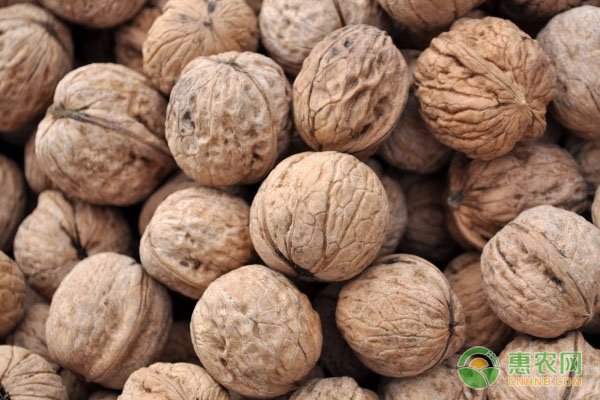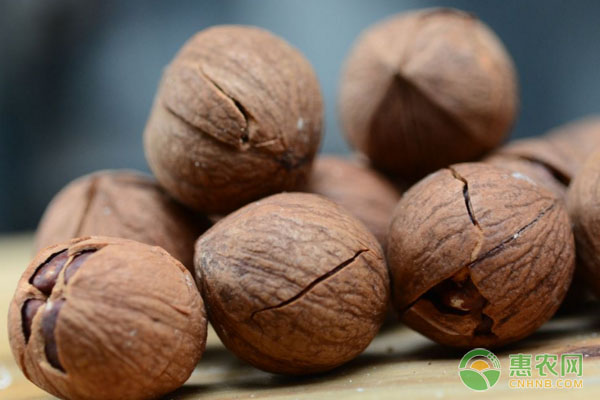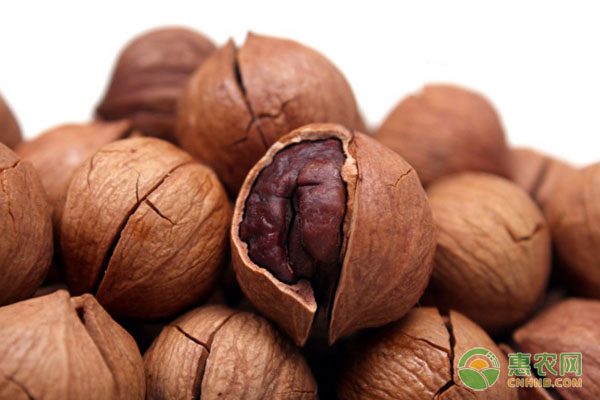Hengshui has a “young six walnuts†milk drink enterprise. Walnuts are widely used as water-saving economic forest trees in Hengshui City. However, in the process of planting walnuts, due to various pests and diseases of walnuts, the walnut trees are robustly threatened and walnuts are grown. The yield, which is the most serious damage caused by black spot disease, so today Xiaobian will simply talk about the symptoms and prevention measures of walnut black spot disease in Hengshui, Hebei. 1 harmful symptoms (1) Fruit: The small brown spots of small and slightly bulging on the surface of the young fruit are gradually enlarged into a nearly round or irregular shape and connected into a piece. The fruit rots from the outside to the inside, causing the whole walnut to become black and rot. (2) Blades: black small grain spots appear in the veins and their bifurcations, and later expanded into nearly round or irregular black-stained lesions. When there is a lot of rain, the leaves have overflowing pus, sometimes the lesions appear perforation, and the leaves shrink and deform. When the disease is serious, the whole leaf becomes dark brown and dry and falls off. (3) Branch shoots: The lesions are oblong or irregular, slightly concave, and the shoots are wilting and deciduous when the lesions are around for 1 week; the spring lesions are dark brown, and in severe cases, they are dead-like. (4) Inflorescence: In the early stage, some small flowers became black and wilted, and then some or all of the inflorescences were damaged, and the flower axis became black and twisted, causing the inflorescences to wither and fall. (5) Bud: The bud is often black and dead after being infected. 2 pathogens The pathogen of walnut black spot disease belongs to the pathogen of the yellow leaf spot of Xanthomonas oryzae of the genus Xanthomonas. The colony is prominent and grows vigorously. The cells are short rod-shaped, round at both ends and negative for Gram stain. The development temperature of the pathogen is 6 to 37 ° C, and the optimum temperature is 25 ° C. 3 incidence law The pathogenic bacteria overwinter in the branches, buds and residual fruits of the walnut trees. Under suitable temperature and humidity conditions, they invade from the stomata, lenticels, nectaries and wounds, causing diseases of leaves, fruits, shoots and inflorescences. In late May, the bacteria began to infect the young leaves of the new shoots. In the early stage of the disease, in early June, the rainy season in July was rapidly spreading. From the end of July to the middle of August, the disease is in full bloom, which will cause a large number of walnuts to fall. High temperature and high humidity are prerequisites for the occurrence of walnut black spot, spreading leaves and flowering stage. It is easy to be ill, the tissue is young, the stomata is fully open, or the wound is more, the surface is moist, which is conducive to the invasion of the bacteria. The wound caused by the walnut moth and the peach aphid is easy to cause pathogen infection. 4 Influencing factors and disease conditions 4.1 Variety The resistance of different varieties to walnut black spot disease is different. Liaohe No. 3 and Liaohe No. 4 have the strongest disease resistance, followed by Xiangling and Liaohe No. 1 disease resistance, Zhonglin No. 1, Gift No. 1, and new paper. The disease resistance is the worst. 4.2 Meteorological conditions Temperature and humidity conditions are the main factors in the pathogenesis of walnut black spot disease. It is rainy in spring, continuous rainfall from late June to mid-August, and sustained high temperature and high humidity. 4.3 Site conditions The soil is thin, the garden is ridiculous, the weeds are abundant, the water and fertilizer loss is serious, and the walnut plantation with low organic matter content is seriously affected. 4.4 Tree Management Young shoots of young trees are long, autumn branches are not fully lignified, winter strips are severe, orchards are dense, ventilation and light transmission are poor, and clear gardens are not completely aggravated. 4.5 Wounds The occurrence of black spot disease of walnut orchard and peach aphid is also serious; frostbite, sunburn, mechanical injury, trimming mouth, and grafting interface will create favorable conditions for disease infestation. 5 Comprehensive control measures 5.1 Agricultural cultivation measures (1) Breeding and cultivation of disease-resistant varieties: high-over-transformation of the main susceptible varieties; walnuts grafted with walnuts as rootstocks are more resistant than ordinary walnuts. (2) Strengthening the management of fertilizer and water: choose the leeward sunny, well-drained, deep and fertile land to build a garden, increase the application of organic fertilizer, and improve disease resistance, as follows: 1 base fertilizer: after harvesting fruit, apply decomposed organic fertilizer before the leaves, the initial result tree is 30 kg/plant, and the fruit-bearing tree is 100-150 kg/plant, radial ditch or strip ditch; 2 Top dressing: Before the germination, the main effect is nitrogen fertilizer, which promotes the growth, flowering and fruit setting of the branches and leaves; the fruit enlargement period and the fruit filling period from June to July, the application of phosphorus and potassium fertilizers, and the timely irrigation after fertilization; the first freeze in the first half of November water. (3) Reasonable pruning to improve the ventilation and light transmission conditions of the tree: to eliminate overlapping branches, cross branches, densely squeezed branches, dead branches, diseased branches and some male flower branches, to improve the ventilation and light transmission conditions of the trees. (4) Clearing the garden and trunks: remove the diseased branches and leaves in the garden, and bring them out of the garden for incineration or burial; in winter and summer, especially the newly planted saplings are painted white to prevent freezing damage and sunburn. (5) It is forbidden to mix with susceptible fruit trees such as plum, apricot and cherry to avoid mutual infection. 5.2 Chemical prevention and treatment measures (1) Chemical control: Spray 3~5 wave of sulphur sulphur mixture before the germination to kill the pests; spray 50% methyl thiophanate WP 1000 times in the leaf stage to prevent the occurrence of phytotoxicity; Spraying systemic fungicides and protective fungicides for 7 to 10 days, such as 10% diphenyl ether carbazole water dispersible granules 2500 times solution, 72% agricultural streptomycin WP 2000 times solution, young fruit period is not allowed Use copper preparation or manganese preparation for prevention and treatment; after fruit enlargement, the therapeutic agent can use 50% carbendazim WP 1000 times solution and 50% carbendazim WP 800 times solution, and the protective agent can be used 1:2:200 Bordeauxol solution or 80% mancozeb wettable powder 800 times solution. (2) Increase the intensity of pests, especially walnuts, moths and peach aphids: winter ploughing under trees and light ploughing in summer; in May, 50% phoxim emulsifiable concentrate is sprayed on the ground around the trunk before adult emergence 300 to 500 times of liquid, or 4% of the enemy horse powder, poisoning and killing the adult; in the early larvae of June, spraying 20% ​​of the pyrethroid emulsifiable concentrate 1500 times. PTFE Coated Guide Wire,Guide Wire,hydrophilic guide wire,medical guide wire Anesthesia Medical Co., Ltd. , https://www.medicaldiverse.com


Harmful symptoms and control measures of walnut black spot disease in Hengshui, Hebei
Next Article
Pay attention to these points before apple bagging!
Prev Article
Litchi May Management Points